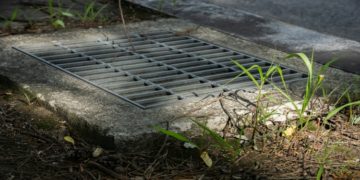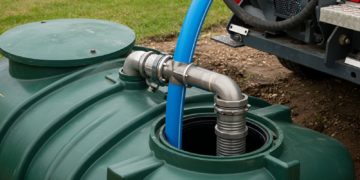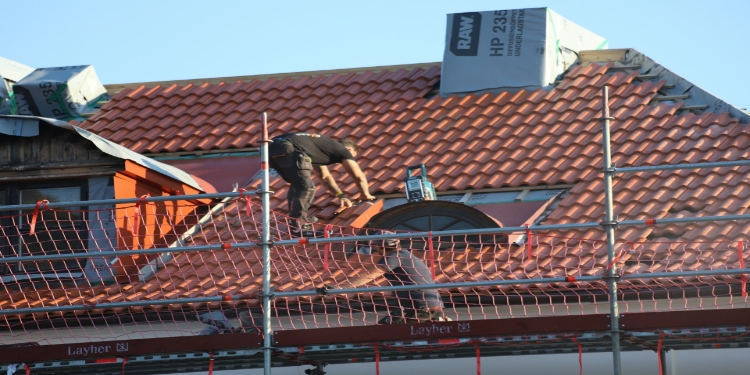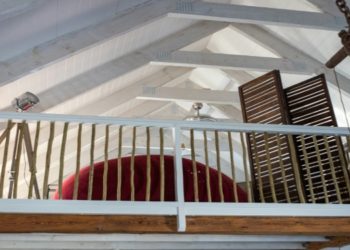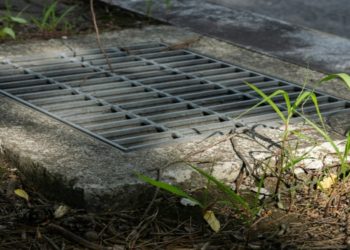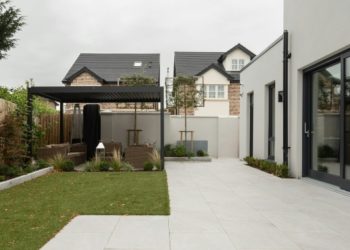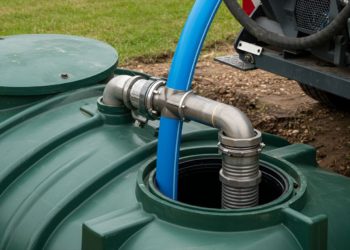Roof repairs represent one of the most critical yet misunderstood aspects of property maintenance across the UK. With repair costs ranging from £150 for minor fixes to £15,000 for major structural work, understanding when, why, and how to address roofing issues can save thousands while protecting your most valuable asset.
Understanding the UK Roof Repair Landscape
The UK’s challenging climate creates unique demands on roofing systems. Recent data from the National Federation of Roofing Contractors reveals that one in five UK homes currently has roofing issues requiring attention. This statistic reflects both the harsh weather conditions and widespread neglect of regular maintenance.
Weather patterns have intensified significantly, with the Met Office recording 23% more extreme rainfall events in 2024 compared to the previous decade. Combined with ageing housing stock where 38% of UK homes were built before 1946, the need for professional roof repairs has never been greater.
The average UK homeowner faces roof repairs costing £530, though this varies dramatically based on location, roof type, and damage extent. London properties typically incur 20-30% higher costs due to access challenges, higher labour rates, and increased scaffolding requirements in densely populated areas.
Common Roof Problems Plaguing UK Properties
Missing or Damaged Tiles: The Most Frequent Culprit
Tile damage affects nearly 40% of UK properties requiring roof repairs. Whether clay, concrete, or slate, tiles crack, slip, or disappear entirely due to weather exposure, thermal movement, and physical impacts.
Clay tiles, popular across Southern England, become brittle after decades of freeze-thaw cycles. Replacement costs range from £110-160 per square metre, including labour and materials. Individual tile replacement typically costs £15-30 per tile, making prompt repairs economically sensible.
Concrete tiles, common in post-war developments, suffer from weathering and surface erosion. While cheaper than clay at £90-120 per square metre for repairs, they require more frequent attention due to shorter lifespans.
Natural slate, prevalent in Victorian properties, offers exceptional longevity but demands specialist handling. Repair costs reach £75-230 per square metre, reflecting both material quality and expertise required.
Roof Leaks: The Silent Property Destroyer
Water ingress remains the most damaging roofing problem, often developing unnoticed until significant damage occurs. UK properties lose an estimated £1.3 billion annually to water damage, much originating from roof leaks.
Leaks typically originate from damaged flashing (45% of cases), missing tiles (30%), or degraded underlayment (25%). Early detection through regular inspections can reduce repair costs by up to 80%.
Modern detection methods include thermal imaging and moisture meters, identifying problems invisible to naked eyes. Professional leak detection costs £200-400 but prevents thousands in potential damage.
Emergency leak repairs cost £150-400 for temporary sealing, while permanent solutions range from £200-800 depending on severity and accessibility. Delaying repairs exponentially increases costs as water damage spreads through timbers, insulation, and internal finishes.
Lead Flashing Failures: A Traditional Weakness
Lead flashing protects vulnerable junctions around chimneys, dormers, and walls. Despite lead’s 100+ year potential lifespan, poor installation and thermal movement cause premature failures.
Common problems include separation from mortar joints, splitting at corners, and theft targeting valuable lead. Replacement costs average £200-500 per metre, though heritage properties may require traditional techniques costing significantly more.
Modern alternatives like zinc (£150-300 per metre) or synthetic solutions (£100-200 per metre) offer cost savings but shorter lifespans. A professional roofer in London can advise on appropriate materials balancing heritage requirements with practical considerations.
Flat Roof Deterioration: A Persistent Challenge
Flat roofs cover 20% of UK properties, particularly common on extensions and modern buildings. Traditional felt coverings last 10-15 years before requiring replacement, though many fail earlier due to poor installation or maintenance neglect.
Built-up felt roofs show problems through blistering, cracking, and ponding water. Repair costs range from £100-140 per square metre for bitumen systems. Complete replacement often proves more economical than repeated repairs.
EPDM rubber membranes, increasingly popular for longevity, still suffer specific issues. Shrinkage affects 15% of installations where inadequate relaxation time was allowed. Seam failures cause 30% of EPDM problems, requiring specialist repair techniques costing £90-140 per square metre.
Gutter and Drainage Issues: The Overlooked Essential
Blocked or damaged gutters cause significant consequential damage despite being relatively simple to maintain. UK properties suffer £450 million annually in damage from gutter-related problems.
Gutter cleaning costs £75-150 for typical properties but prevents overflow damage costing thousands. Replacement guttering ranges from £400-800 for standard properties, increasing substantially for cast iron systems on period properties.
Downpipe repairs cost £150-300 per section, while complete replacement ranges from £200-500 per pipe depending on material and height. Regular maintenance dramatically extends system lifespan while preventing costly water damage.
The True Cost of Roof Repairs in 2025
Regional Price Variations Across the UK
Location significantly impacts repair costs, with London commanding premium prices. Labour rates in the capital average £250-350 daily compared to £150-250 in Northern regions. This differential reflects living costs, demand, and operational expenses.
Scaffolding costs vary dramatically by region. London prices reach £1,000-1,500 weekly for terraced properties, while rural areas might pay £500-800. Access restrictions in city centres further increase costs through parking permits and restricted working hours.
Material costs show less variation, though transportation charges affect remote locations. Urban areas benefit from competitive supplier networks, while rural properties might face 10-15% premiums for delivery.
Emergency Repairs: When Time Equals Money
Emergency call-outs command premium rates, particularly outside standard hours. Weekday emergency response costs £150-250 for assessment, rising to £300-500 during weekends or holidays.
Storm damage repairs during peak demand periods see prices increase 30-50% due to contractor availability. The 2024 winter storms demonstrated how delayed response multiplies damage costs. Properties waiting weeks for repairs averaged £3,500 in total costs versus £800 for immediate attention.
Temporary weatherproofing provides crucial protection while awaiting permanent repairs. Professional tarpaulin installation costs £200-1,500 depending on area covered, but prevents exponential damage escalation.
Hidden Costs Most Homeowners Overlook
Building Control fees apply when replacing over 50% of roof covering, adding £200-500 to project costs. Many homeowners discover this requirement late, causing delays and budget overruns.
Structural repairs often emerge once coverings are removed. Rotten rafters cost £350-600 per beam to replace, while comprehensive timber treatment adds £500-2,000 to projects.
Asbestos removal, common in properties built 1950-1980, requires specialist handling costing £50-100 per square metre. This unexpected expense can double repair budgets if extensive contamination exists.
When Repair Becomes Replacement: Making the Right Decision
The 25% Rule: Understanding Economic Thresholds
Industry guidance suggests complete replacement when repair costs exceed 25% of replacement value. This threshold accounts for ongoing maintenance, warranty benefits, and improved performance from modern materials.
A typical UK roof replacement costs £5,000-15,000, making the economic threshold £1,250-3,750 for repairs. However, this simplistic calculation ignores roof age, condition, and future maintenance requirements.
Roofs approaching 20 years benefit from replacement rather than extensive repairs. New installations include warranties, improved insulation, and compliance with current regulations, adding value beyond simple repair economics.
Age-Related Deterioration Patterns
Different materials show distinct ageing patterns affecting repair versus replacement decisions. Concrete tiles last 30-50 years but show accelerated deterioration after 30 years. Repairs during years 20-30 prove economical, but replacement becomes sensible thereafter.
Slate roofs last 75-100+ years, making repairs economical throughout most of their lifespan. However, nail corrosion after 80 years often necessitates complete re-laying despite slate remaining sound.
Flat roofs present clearer decisions with 15-20 year lifespans for traditional felt, 25-30 years for modern membranes. Repairs beyond 75% of lifespan rarely prove economical given rapid deterioration acceleration.
Energy Efficiency Considerations
Modern building regulations require significant insulation improvements during major repairs. Adding insulation during repairs costs marginally more than repairs alone but delivers substantial energy savings.
The average UK home loses 25% of heat through the roof. Proper insulation during repair work reduces heating costs by £200-400 annually, rapidly offsetting additional investment.
Government schemes occasionally support energy efficiency improvements during repairs. The ECO4 scheme, running until 2026, provides funding for insulation when combined with necessary repairs for eligible properties.
DIY Versus Professional Repairs: A Critical Decision
What Homeowners Can Safely Tackle
Minor maintenance tasks within capable DIY scope include gutter cleaning, moss removal, and replacing individual tiles on accessible roofs. These tasks save £150-500 annually when performed safely.
However, statistics reveal sobering risks. The Health and Safety Executive reports 7 deaths and 3,000 serious injuries annually from domestic ladder falls. Professional contractors carry insurance, safety equipment, and training, justifying their costs.
Even apparently simple repairs can cascade into complex problems. Incorrectly replaced tiles cause leaks, while aggressive moss removal damages surfaces. Professional assessment costs £150-250 but prevents costly mistakes.
When Professional Expertise Becomes Essential
Structural repairs always require professional handling. Load calculations, building regulations, and safety considerations exceed DIY capabilities. Attempting structural work risks catastrophic failure and invalidates insurance.
Lead work demands specialist skills and equipment. Working with lead requires specific health precautions, and poor installation causes premature failure. Certified lead workers cost more but deliver decades of reliable performance.
Warranty considerations further support professional engagement. Manufacturer warranties require approved installer fitting, while insurance claims often demand professional repair evidence. DIY work might save initially but costs more through lost protection.
Choosing the Right Repair Approach
Temporary Versus Permanent Solutions
Emergency situations sometimes necessitate temporary repairs, buying time for proper solutions. Temporary sealants cost £50-200 but last months rather than years. Understanding these limitations prevents false economy.
Permanent repairs cost more initially but deliver long-term value. Quality materials and proper installation techniques ensure decades of protection, making higher initial investment worthwhile.
Budget constraints might favour phased approaches, addressing critical issues immediately while planning comprehensive solutions. Professional contractors like established roofers in London can develop staged repair programmes balancing urgency with affordability.
Material Selection for Longevity
Choosing appropriate materials significantly impacts repair longevity and lifecycle costs. Like-for-like replacement maintains aesthetic consistency but might perpetuate inherent weaknesses.
Modern alternatives often outperform traditional materials. Dry ridge systems eliminate mortar maintenance, synthetic underlays provide superior protection, and composite tiles combine aesthetics with durability.
Conservation areas and listed buildings restrict material choices, potentially increasing costs. Specialist suppliers charge premiums for heritage materials, while installation requires traditional techniques costing 30-50% more than standard methods.
Preventing Future Problems: Maintenance Strategies
Inspection Schedules That Work
Biannual inspections, ideally spring and autumn, identify problems before they escalate. Spring checks address winter damage, while autumn preparation prevents storm damage.
Professional inspections cost £150-300 but identify issues invisible from ground level. Drone surveys, increasingly popular, cost £200-400 and provide comprehensive documentation without scaffolding.
DIY monitoring between professional inspections catches obvious problems. Binocular examination from ground level, internal ceiling checks, and gutter monitoring provide early warning signs.
Preventive Maintenance Economics
Regular maintenance costs £200-500 annually but prevents repairs costing thousands. Gutter cleaning, moss treatment, and minor repairs extend roof lifespan by 30-50%.
Protective coatings cost £20-40 per square metre but extend tile life by 10-15 years. Applied every 5-10 years, they prevent water absorption and frost damage.
Ventilation improvements cost £500-1,500 but prevent condensation damage affecting 20% of UK properties. Proper airflow reduces timber decay, insulation degradation, and mould growth.
Insurance and Roof Repairs: Navigating the Complexities
What’s Covered and What’s Not
Standard policies cover storm damage, falling trees, and impact damage but exclude wear and tear. Understanding policy specifics prevents claim rejection disappointment.
Gradual deterioration remains homeowner responsibility, making maintenance records valuable. Documenting regular upkeep supports claims when sudden damage occurs.
Policy excesses typically range from £100-500, affecting claim economics. Minor repairs below excess levels might be better handled directly, preserving claims history for major incidents.
Maximising Successful Claims
Immediate damage mitigation prevents claim reduction. Emergency weatherproofing demonstrates responsible ownership while preventing additional damage.
Comprehensive documentation supports successful claims. Photographs before, during, and after damage, weather reports, and professional assessments strengthen cases.
Using approved contractors often accelerates claim processing. Insurers maintain preferred supplier networks, offering streamlined approvals and direct billing arrangements.
Future-Proofing Your Roof
Climate Change Adaptations
Increasing weather extremes demand robust roofing solutions. Stronger fixings, improved drainage capacity, and enhanced wind resistance become essential rather than optional.
Solar panel integration requires structural assessment costing £300-500. Reinforcement might cost £1,000-3,000 but enables renewable energy generation worth £500-1,000 annually.
Green roof systems, increasingly popular in urban areas, cost £50-150 per square metre but provide insulation, drainage, and biodiversity benefits. Planning requirements increasingly favour sustainable solutions.
Technology Integration
Smart monitoring systems detect problems early through moisture sensors and movement detection. Installation costs £500-2,000 but prevents major damage through early warning.
Drone inspections reduce survey costs while improving documentation. Annual drone surveys cost £200-400 versus £500-1,000 for traditional scaffolding-based inspections.
Digital maintenance records enhance property value while supporting insurance claims. Cloud-based systems track repairs, warranties, and inspection histories, providing comprehensive property documentation.
Conclusion: Protecting Your Investment
Roof repairs require careful consideration balancing immediate needs with long-term value. Understanding common problems, realistic costs, and appropriate solutions empowers property owners to make informed decisions.
Professional expertise proves invaluable when addressing complex roofing issues. While DIY maintenance has its place, significant repairs demand qualified contractors with proper insurance, certifications, and experience.
Regular maintenance and prompt repairs protect property values while preventing escalating damage. Investment in quality repairs using appropriate materials delivers decades of reliable protection, making initial costs worthwhile.
The UK’s challenging climate and ageing housing stock ensure roof repairs remain essential property maintenance. By understanding the complexities involved and choosing appropriate solutions, property owners can protect their investments while maintaining comfortable, weatherproof homes.
David Prior
David Prior is the editor of Today News, responsible for the overall editorial strategy. He is an NCTJ-qualified journalist with over 20 years’ experience, and is also editor of the award-winning hyperlocal news title Altrincham Today. His LinkedIn profile is here.






































